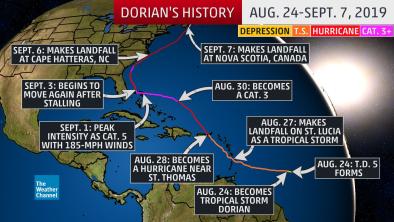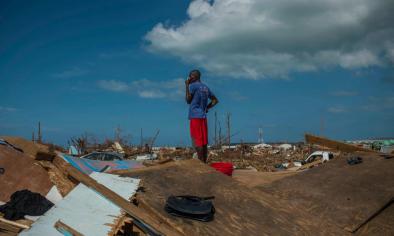Science Source
A climatological study of the effect of sea-surface temperature on North Atlantic hurricane intensification
- Examines the climatic influence of sea-surface temperature (SST) on intensification for North Atlantic hurricanes by averaging hourly intensity increases from best-track data over the period 1986–2013 in 4° by 4° latitude–longitude grid cells
- Averages independent monthly SST data over the same period in the same cells
- Quantifies the SST effect on intensification at the climate scale (after removing cells with cold water or fast moving hurricanes) by regressing intensification onto SST while controlling for average intensity
- Model shows a statistically significant relationship, with higher intensification values associated with higher SST values
- Finds on average, mean intensification increases by 16% [(9, 20)% uncertainty interval] for every 1 °C increase in mean SST
- Identifies a clustered region where the model underpredicts intensification is noted over the southeastern Caribbean Sea, perhaps related to the fresh water plume from the Orinoco River
Related Content
Headline

Sep 9, 2019 | Weather Underground
Ex-Dorian Slams Canada at Cat 2 Strength; Cat 3 Typhoon Faxai Pounding Tokyo
Headline

Sep 9, 2019 | The Weather Channel
Hurricane Dorian Ravaged the Bahamas and Struck the Southeastern U.S. Coast Before Heading to Atlantic Canada
Headline

Sep 9, 2019 | New York Times
Corpses Strewn, People Missing a Week After Dorian Hit the Bahamas
Headline

Sep 6, 2019 | The Guardian
Hurricane Dorian: 'We're at the frontline of climate change but we don't cause it', says Barbados PM – as it happened


